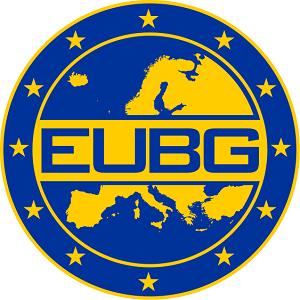EU Battlegroups

Basic Facts
In July 2004, the EU decided to form the EU Battlegroups (EUBG), an initiative, which was especially advocated by Germany, France, and Great Britain. Also smaller member states were initially involved in the project, as it offered them an opportunity to take part to the European Union’s Permanent Structured Cooperation (PESCO). The EU Battlegroups are military units which have a higher degree of military striking power. The EUBGs are under the political and strategical command of the Political and Security Committee of the European Union.
The core of a battlegroup consists of one infantry battalion with smaller, supporting units. Additionally, depending on the mission, the battlegroup can be supported by units from other branches. Normally, an EUBG includes between 1500 and 2200 troops.
Main Tasks and Goals
As a military quick reaction force, EUBG’s tasks include humanitarian operations, peacekeeping, and combat operations within the context of crisis management as well as peace building missions. For instance, these tasks include counter terrorism operations. The most suitable deployment of EUBGs is in the context of a mission with a clearly defined task in a certain region. As a result of their ability to deploy in a short period, EU Battlegroups are an effective tool for crisis prevention operations. To accomplish these tasks, a battlegroup, which contains military units from different member states under the leadership of one state, has a standby time of six months. In this period, the battlegroup can deploy within a radius 6000 kilometers in a time span of 10 days. On site, the battlegroup is intended to operate at least 30 days autonomously.
In matters of the European Union, the EUBGs are an important part of the EU’s security and defense policy, because they contribute to the Union’s resilience. The existence of EUBGs enables the Union to react quickly and strategically effective to challenges regarding security policy. In a larger context, EUBGs are also an important part of the European pillar of NATO, as the certification of the battlegroups is based on NATO standards.
Current role
The most recent European Battlegroup has been the EUBG 2020 – 2. Under the guidance of the German Army, forces from Austria, Czech Republic, Finland, Croatia, Ireland, Latvia, the Netherlands, and Sweden provided 4100 soldiers. The German Army contributed to the battlegroup with 2500 soldiers, mostly from the Division Schnelle Kräfte (Rapid Forces) under the command of Major General Andreas Hannemann. The EUBG 2020 – 2 had a standby time from July 2021 until March 2021. Due to the Covid-19 pandemic, the standby time had been extended because of the low availability of replacement forces. Alongside the German-led EUBG, in the same period, there was also an active battlegroup of Italian and Spanish forces under the guidance of Italy.
Vision
Currently, the concept of the EU battlegroups is facing several challenges. Especially the present lack of troops for the EUBG 2021 – 1 is a severe threat for the combat readiness of Europe’s quick reaction and therefore also for the European Union’s security and defense policy. As scheduled as of 11st April 2019, the upcoming EUGB 2021 – 2 will include forces from five nations, including Italy, Austria, and Hungary. Even though, the concept of EUBGs is facing challenges now, they are an important tool of military cooperation in the EU. The multinational units offer chances to train with other European armies and to develop new concepts for the common European defense. In this context, EUBGs contribute to the improvement of interoperability within the European Armies and allows to identify problematic issues before a potential combat situation. For example, the EUBG 2020 – 2 showed problems regarding different standards in telecommunication, which were successfully solved. For the European Union, the EUBGs are an important asset of the security and defense policy which allows the Union to become an independent and successful international actor.
Conclusion
The EUBGs as a quick reaction force are an important pillar of the EU’s security and defense policy. Due to their high mobility, the battlegroups can preserve Europe’s interests in a huge operative radius within less than two weeks. Even though, the concept is facing several challenges, it is an essential aspect of the European military cooperation.
0 Comments